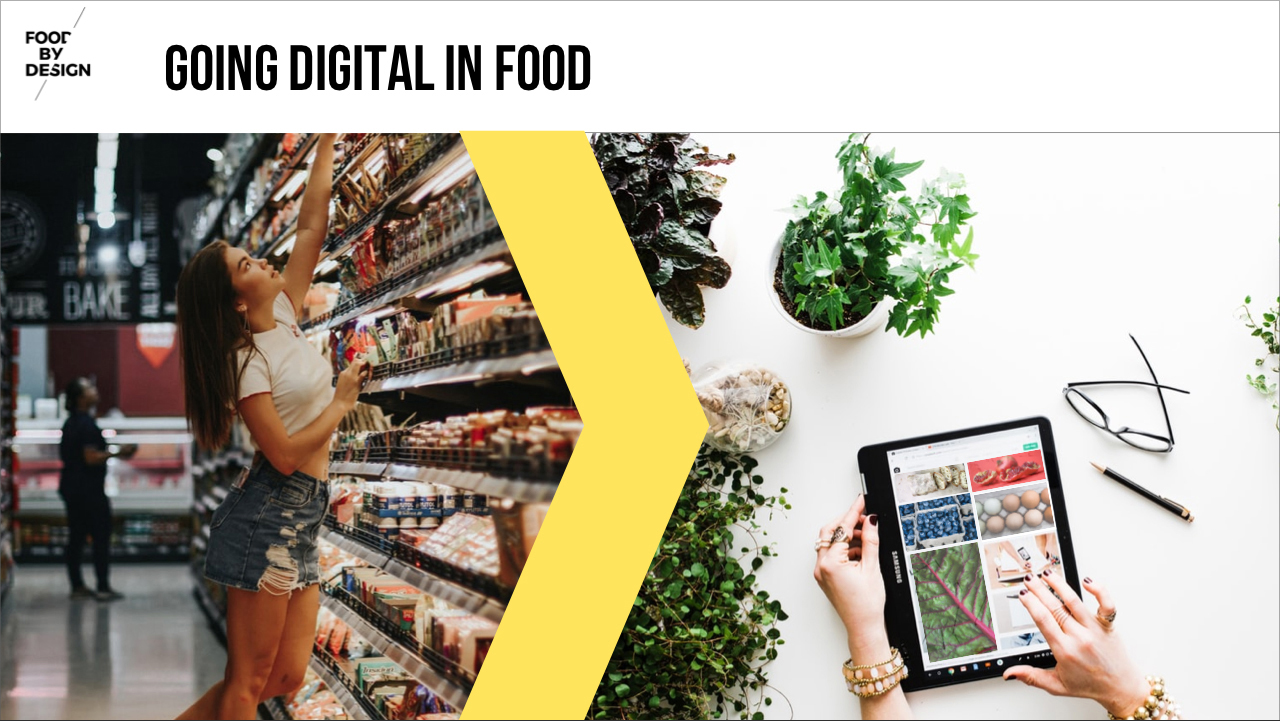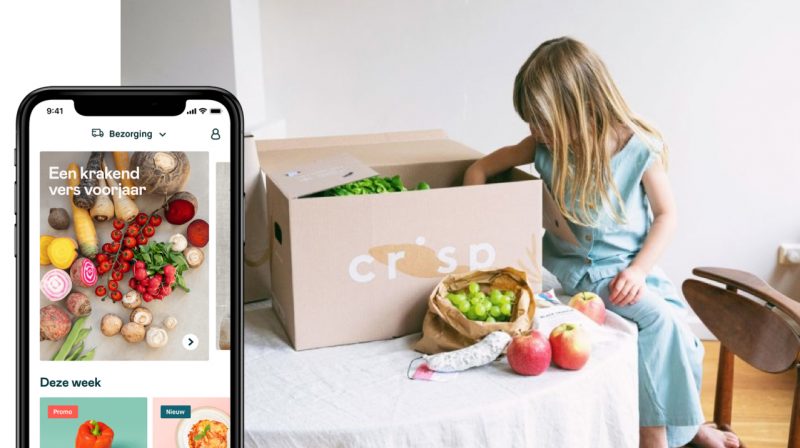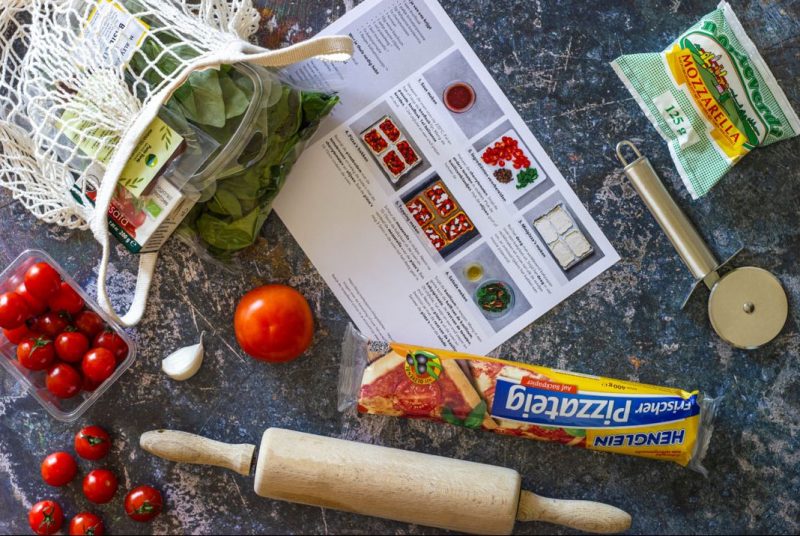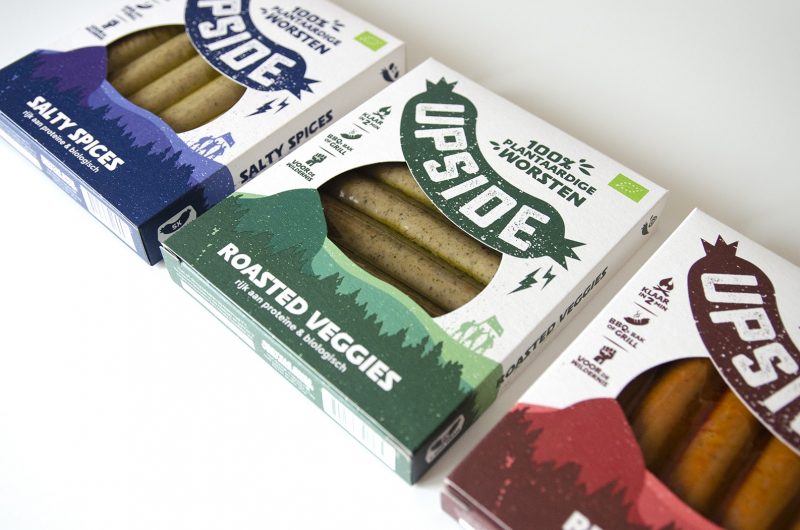
Until now, food has been under-represented in e-commerce compared to other markets such as consumer electronics, entertainment and fashion. But because of Corona, we are now seeing an acceleration in digital shopping and delivery of food. On the one hand because consumers do not want to enter the stores or can’t visit restaurants. On the other hand, because companies realize more than ever that digital channels create extra sales opportunities.
The fact that this transition is going on is no news. In our trend presentations and innovation projects, digital food innovation is of growing interest. But we must note that food is lagging behind other sectors. And that is interesting to think about. Why is that? And what should we take into account if we like to catch up?
In our opinion, there are two reasons for this. The first is that food is more sensory than many other products and services. You don’t only want to see it, you also want to taste, smell and feel it. The second reason lies in the fact that the digi-specialists are often very application-oriented, while food requires a holistic approach where sensory and emotion have to come together with technology. And actually, that technology or digitalization is not a goal in itself but an enabler to meet consumer’s food needs in a better way.

Crisp is an innovative online food retailer offering ultra fresh produce in the Netherlands.
Food is multi-sensory
More than any other category, food appeals to all the senses. When shopping we smell a melon, squeeze an avocado and see if pre-cut lettuce already has brown edges. Food is perishable, and nature has equipped humans with many sensors to detect that. On-line we don’t have much use for that. One television doesn’t differ much from another with the same model number, but every apple is different. And even processed products are not all the same. We unconsciously use many indicators to determine whether the product is ‘tasty’, the bread should not be baked too dark, the sandwich should not be soggy because of the tomato in between, the yoghurt should not be lumpy. The tricky thing about offering food online is that you can never show the product that the consumer actually buys. It is a picture of the ideal product, but not the ‘one apple’ or the ‘one bread’ that the consumer actually buys.
So digital food retail is even more about trust. And that’s where the importance of food brands comes into play. The first food brands were created at the beginning of the 20th century. Their success lies mainly in being able to produce on a large scale for a lower price, but also in being able to guarantee food safety. The parallel can be nicely extended to these days. Today, too, we are dealing with new technology, and this requires a new kind of trust. That is the mission of food brands that also want to play a role in the digital space.
The customer journey of online food is very different from the physical world. And unlike buying a relatively expensive bicycle or choosing an educational program, less time is spent on preliminary research. Buying food and drink is much more common, and therefore habits play a bigger role than in other categories. Although customer journeys vary per product, there are two important ones to highlight.
1) The planned meal customer journey – finding inspiration, considering convenience, health, value for money and more, creating a meal plan and shopping list an do the cooking.
2) Impulse buying – being seduced at the moment of shopping to buy something spontaneous and unplanned.
These two important customer journeys are interesting to think through in the digital domain. Through good online design and communication, one will be able to break into the circle of awareness, consideration, buying and consuming. Next to trust, there is another crucial weapon to win in the online domain.

Understanding your customer journey from inspiration, planning, cooking to eating is crucial in digital food innovation
Design for Appetite
In every online expression it is important to design for appetite. And here too, the rules of the game are different in the digital world. Because most human senses are disabled online, the visual appetite is extremely important. And here, a lot of online food initiatives are still lacking. Many online retailers and delivery sites are sterile white pages with an infinite number of products. Often depicted small, with unreadable packaging. This mono-sensory, highly visual environment demands different design principles.

Bold packaging design for on & offline performance. Design by Laura Voet
Online packaging design
For example, packaging will have to be designed differently to stand out in the digital ‘shelf’. The picture is often shown smaller than in real. On the other side online offers more space for origin stories, recipe inspiration and health & sustainability facts.
Mouthwatering communication
And going far beyond your own anchor point on the web, you should be meeting your targeted on-line consumer with mouthwatering messages. Combining a smart online, targeted media strategy with appetite raising content. How to create that, is a profession in itself.
This is about bringing taste visually alive. This can be done in many ways, but requires great detail, precision and also a certain flair. For example, displaying deep colours as markers of intense flavours, by depicting some messy breadcrumbs to communicate a crispy bread crust, or by displaying large craving boards with playfully arranged snacks that communicate abundance and a good vibe. The possibilities are endless, but there is a great intuition and flair needed with the makers involved.
And also, the frequency is important, it has to be an endless flow of inspiration. Not a single-time trick. Remarkably, we see some food bloggers and Instagrammers doing very well, but we also see that brands and companies are still searching and struggling there. It’s not just about the content itself but also about the organization of that continuous flow of inspiration and communication. Which people do you need for this and how do they work together?
And that brings us to the last point. The people who will realize the digital transition, maintain it and keep it running. Above all, this will require interdisciplinary work. Actually, many disciplines are needed to form a good team. It is definitely not just the responsibility of the IT department, the marketing department or a one-off job for a digital agency. Starting with brand/ company strategy and creating value for the user is key. From there, customer journeys can be worked out to all touchpoints of the brand and its users. On the one hand this will be a fixed place on the internet and on the other hand it will wander around to find the right target groups at relevant moments.

Great food styling and recipe design by our befriended stylist Alexandra Mitsiou.
Brand reliability and appetite raising design are key
That brings us to the conclusion that food companies can catch up with other categories, but to do so they need to redefine brand reliability and create appetite raising design as weapons to win in the digital food innovation domain.
Let’s start and organize your digital food innovation!
As food innovation experts, we help food brands with digital food innovation more and more often. In doing so, we put your brand first and work holistically with a multidisciplinary team. Of course, part of the team will be people in your company, but just for sure, we have a team ready with all kinds of specialist to complete if needed.
We have experts in the field of:
• Online & retail Branding
• Product & concept innovation
• E-commerce
• Webdesign
• Online communication incl social media
• Food styling & photography
• Graphic & packaging designers
• Sales strategy
• Logistics
Are you curious how digital innovation can enforce your brand, create new business models and open up new sale channels? And how to organize it? … Then give us a call and we can discuss your questions.